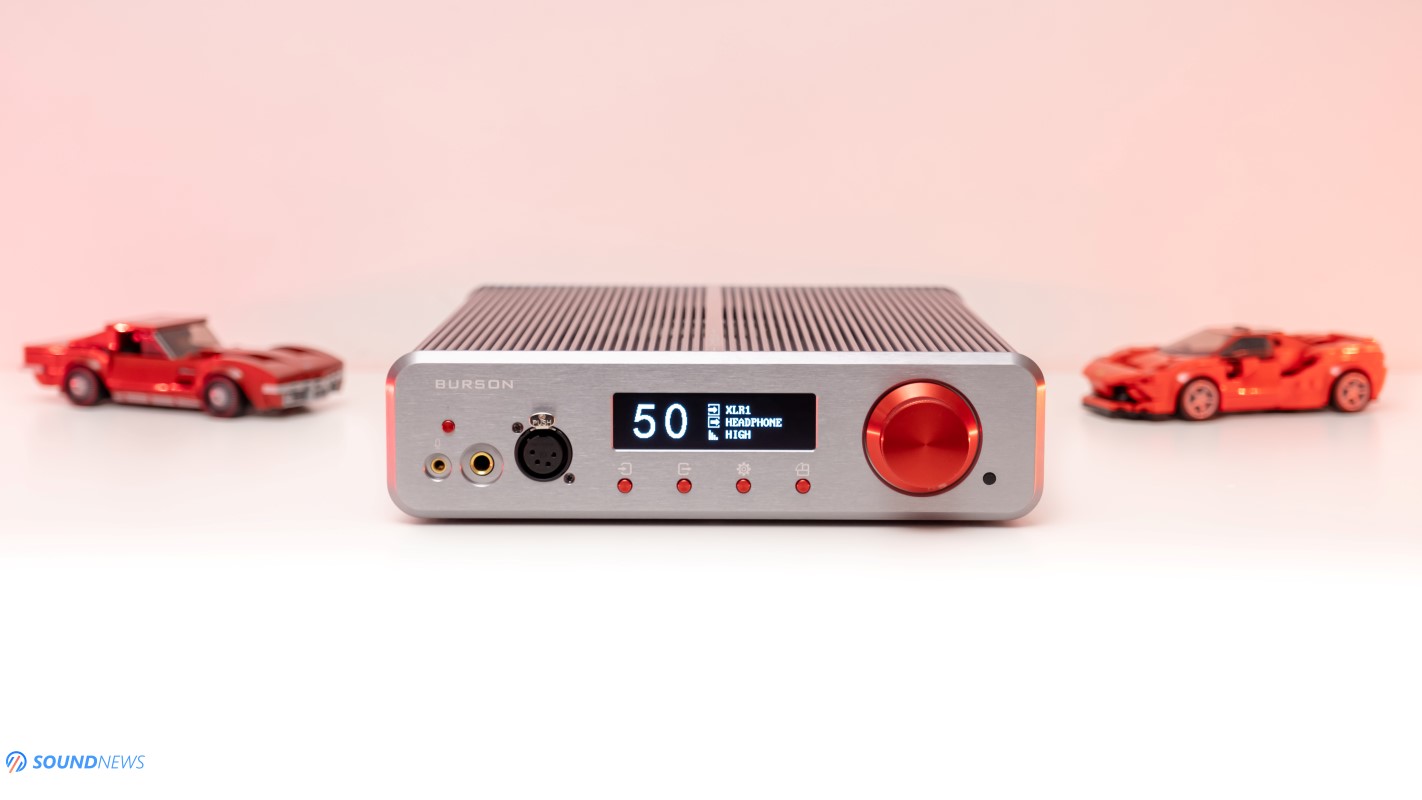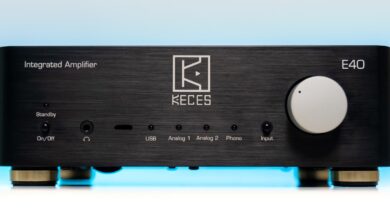The ONE to Beat: Burson Soloist 3X Grand Tourer Review
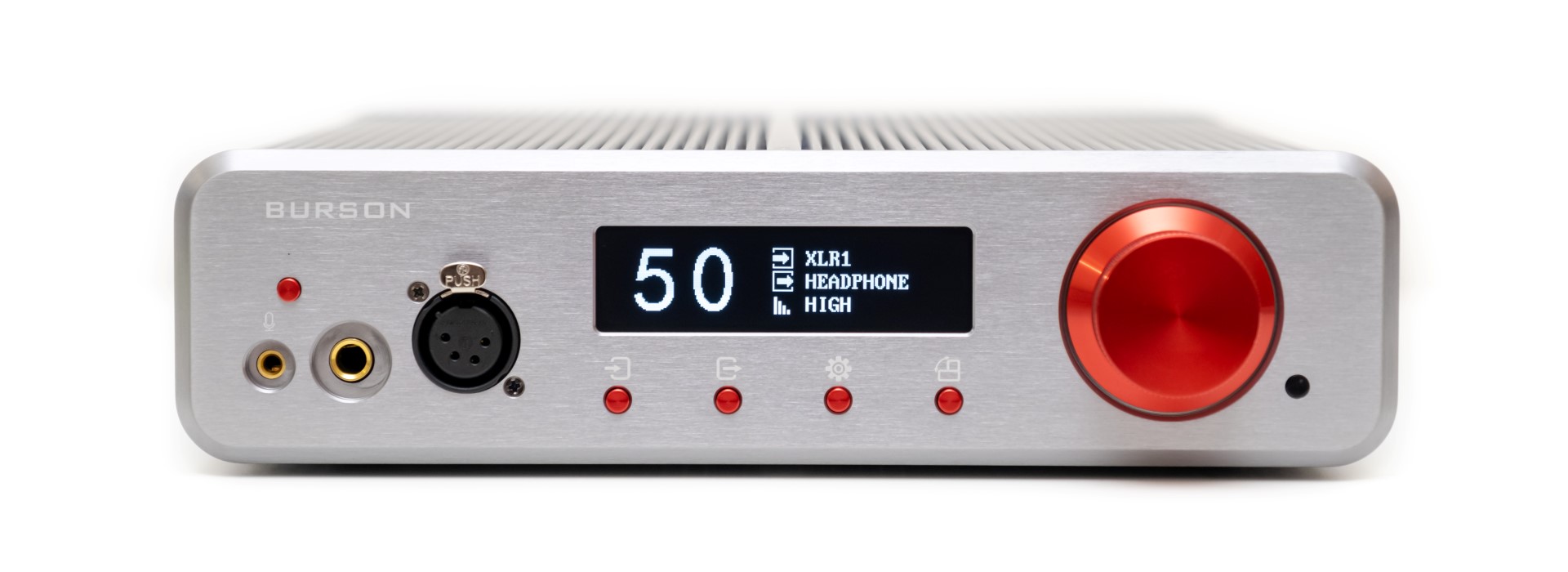
My Video Review:
They celebrate Christmas on the beaches, they high five kangaroos on their way to work, they avoid redback spiders as much as they avoid using op-amps in their creations and they call themselves Burson Audio. They are best known for Conductor and Timekeeper all-in-one series that conquered the hearts of many music lovers by now. However, if you are one of those stubborn folks (me included) that crave only for the best, Burson got you covered with dedicated headphone amplifiers, DACs, preamps and integrated. If you’re serious about headphone listening, then you definitely bumped into their doings at least once in your lifetime, as they are one of the few that pushed the boundaries of personal audio, driving this industry forward year after year. My career as a writer started with a Burson component a long time ago and they somehow latched closer to my heart as without them, you wouldn’t be reading these words. Just a few years ago, they revealed their newest wonder boxes that were equipped with Cool Cases, not because they looked neat and dandy, owing it to an increased surface area that was better at passively cooling their electronics.
Soloist 3X is considered by many as one of the greatest bargains for headphone collectors, as with a single component you could drive your entire headphone collection, without ever thinking about an upgrade. In spite of that, as more people made their acquaintance with the Australian brand…a strong demand for a statement headamp could be felt in air. A few months passed and a birdie paid me a visit, chirping that a statement Soloist will be revealed when the old and new year would collide. Enter the Grand Tourer of headphone amplifiers that prides itself with a deeper class-A operation, higher power output, lower noise levels, over-engineered volume control, advanced features and outstanding I/O. Its Cool Case was no longer enough at keeping cool its inner workings, that a silent Noctua exhaust fan was added, pulling hot air outside its case and prolonging the life of its electronics. If this is their biggest and meanest headphone amplifier, wouldn’t it be cool if some Ferrari Red accents would be added, matching with its Grand Tourer moniker I’ve asked them. You can already expect my reaction when I started unboxing it and seeing it so glowing and vivid. Burson team loved those accents so much, that all future Soloist 3X GT units would be coming with the same red accents and I cannot express how happy I am about this. As a statement and no-compromise headphone amplifier, its price point was adjusted accordingly. The standard version goes for $2499 and the upgraded version that swaps its external switching mode power supply with a Super Charger 5A goes for $2799. Soloist 3X GT powered by a Super Charger 5A will be tested with plenty of headphones, IEMs and for a good measure, it’ll try it as a preamp in between my streamer/DAC and two power amplifiers. In typical fashion, I will be going deep into the rabbit hole and in the latest chapters I’ll compare it with a couple of world-class headphone amplifiers, so stay tuned for that! Until that happens, let’s have a look inside its box.
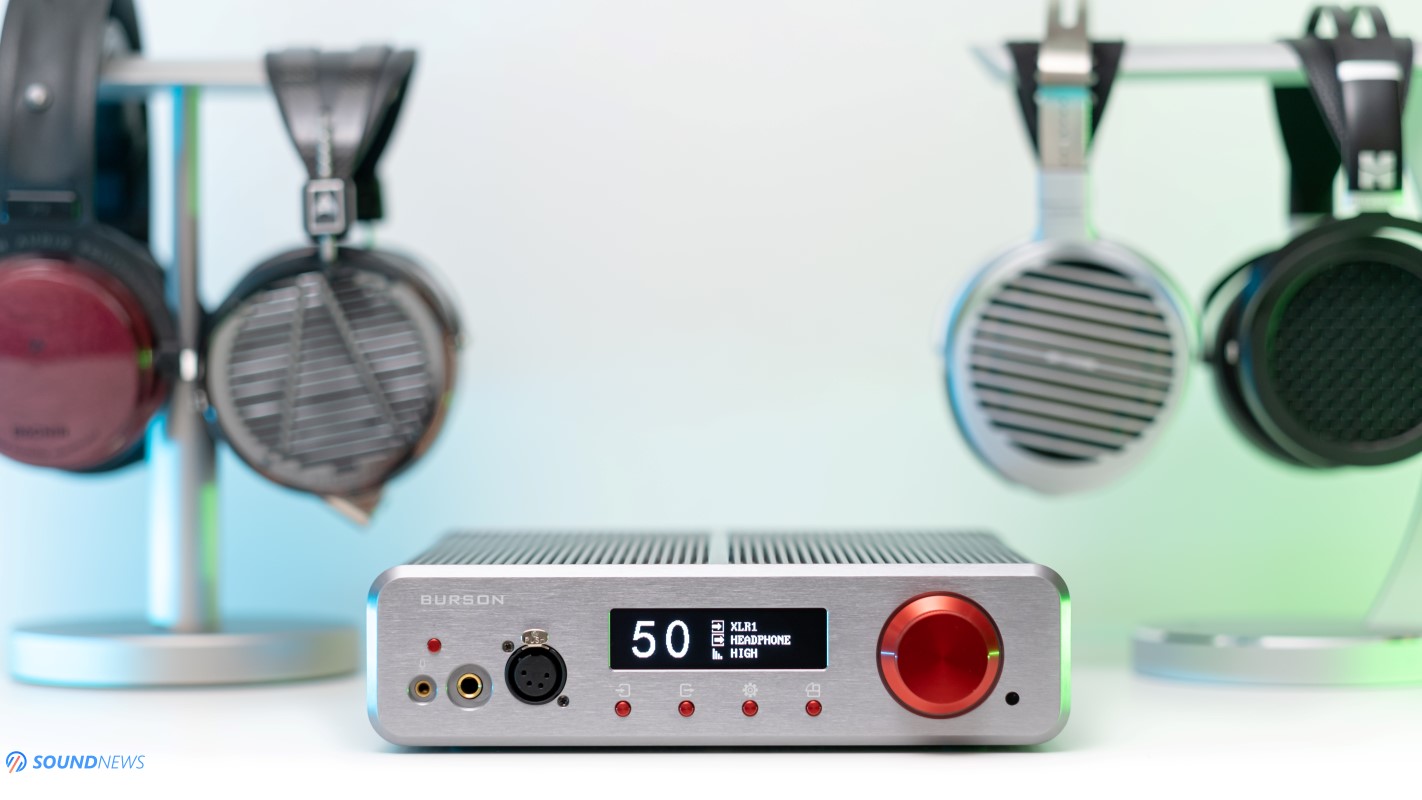
Unboxing Experience
As usual, everything came double boxed as all Hi-Fi wonder boxes are coming nowadays. There is a lot of white foam that’s protecting the precious cargo during shipping. Besides the unit itself that sits in a throne of foam, there is an accessory box nearby that houses:
- A high-quality aluminum remote with the same red accents on its buttons
- A torx screwdriver to open its case
- An extra mini fuse, in case the pre-installed one goes sideways
- A mini to mini (3.5mm jacks) trigger cable, so you can power multiple audio components with a single remote
- A high-quality RCA interconnect cable
- Two XLR to RCA adapters
- A microphone adapter, in case your gaming headset uses two separate cables
- An external power brick and a power cable that attaches to it
- Six JRC 5532D op-amps from New Radio Japan – you’ll need them in case V6 op-amps are showing signs of age
Oh my, that’s a whole lot of accessories if you ask me! It is more than enough, but I’m pleased the most about its metallic remote, which will come in handy in a stereo setup.
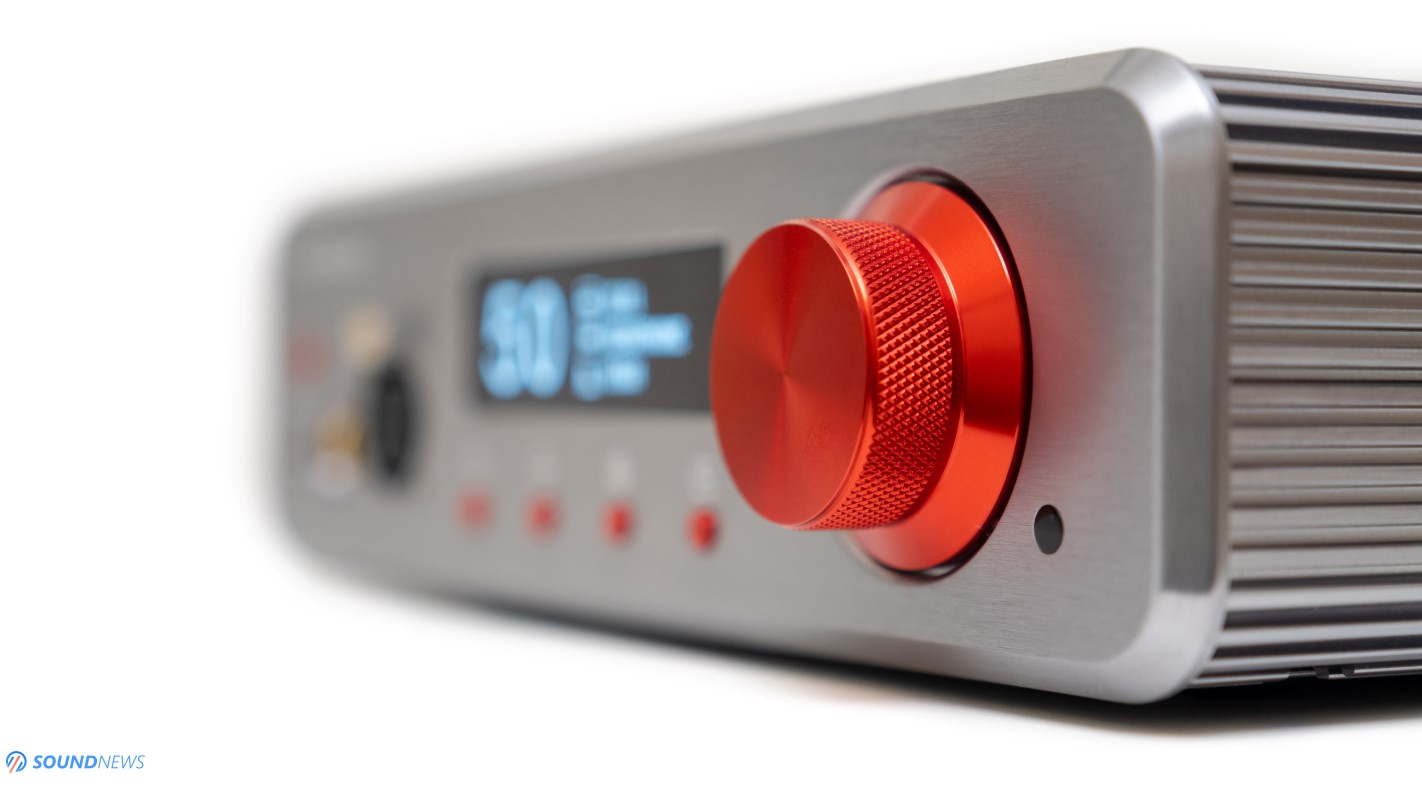
Design & Build Quality
Around two years ago Burson updated the look of all their devices, retrofitting them with Cool Cases that tripled their surface area, seriously improving heat dissipation and service life. On the outside it looks pretty much the same with their flagship Conductor 3 Reference and Timekeeper 3i units. Burson redesigned its case from the ground up and used every internal square inch at maximum potential. It’s fully stocked with some of the best components in a shiny aluminum case.
The fins that are wrapping it entirely are working as a huge heat sink, but since its internal power supply and amplifier stages are working at their maximum potential, they adopted active cooling with the help of a 120mm Noctua fan that gave them freedom to push the GT to its performance limit. Noctua fans aren’t new to me, as I’m using them for more than 10 years in desktop PCs and I’m currently using a single Noctua NF-A14 exhaust fan in my Corsair One i160 for its silent operation.
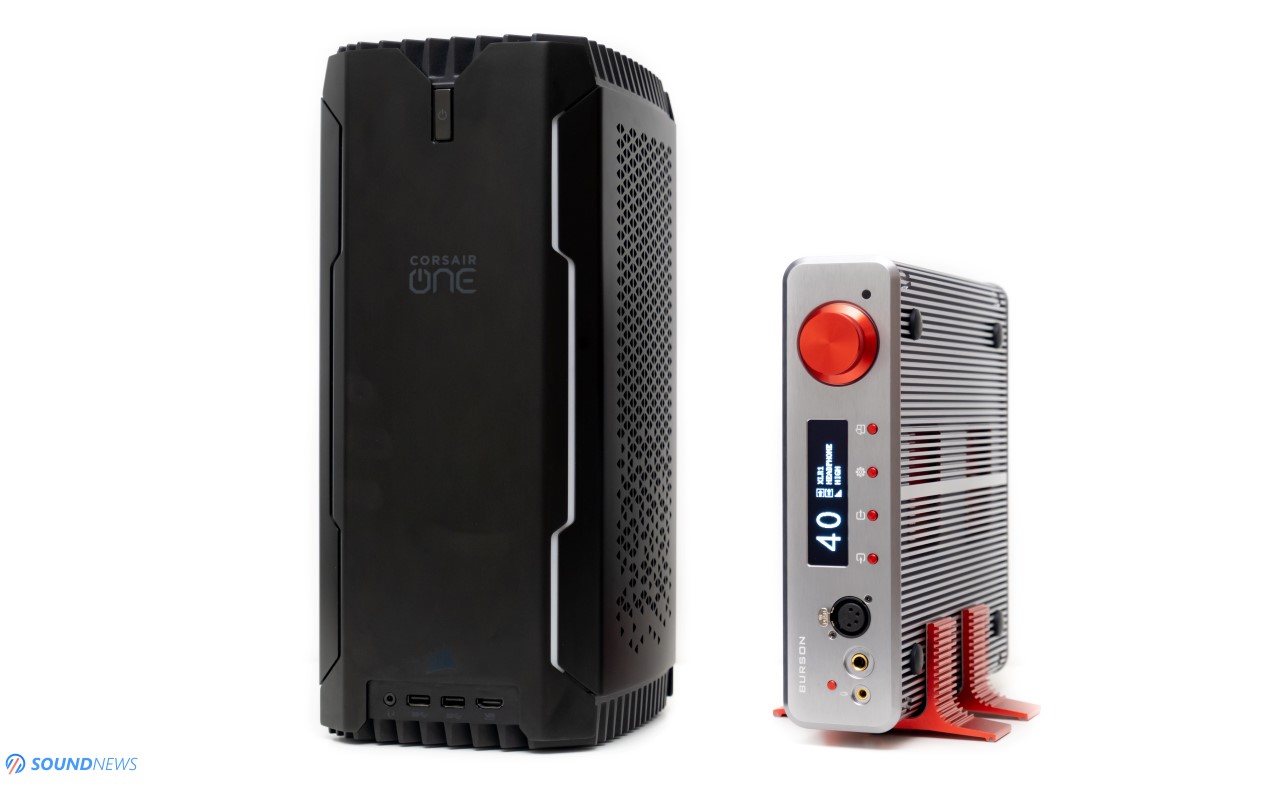
Combining a resonance-free enclosure with the quietest fan money can buy, fan noise sits below 25 dB. In comparison, an empty recording studio has over 30 dB of ambient noise, meaning that Soloist GT is quieter than the background ambience of your music and I can vouch for that. I can hear it only when I’m shutting down my PC and only when there’s an absolute silence in my office.
Its threaded volume wheel has a nice grip and it reminds me about my EDC flashlights – another hobby of mine. Burson hid all the screws on its back panel, for a much cooler look. Naturally, the case was milled on a CNC machine, exposing its raw aluminum look, that fits it like a glove. It has some decently sized rubber feet underneath and it doesn’t matter if you’re placing it horizontally or vertically, as its active cooler will be chilling it down no matter what. If your listening station is cramped with electronics, I recommend getting a dedicated Cool Stand that you can buy separately for $125, check it out here. I’m using one on a Timekeeper 3i and Soloist 3X and it’s literally and figuratively very Cool. With it, Soloist GT will be standing up, using considerably less desktop space and you shouldn’t worry about scratches as it uses a thick layer of anti-slip scratch-resistant silicone lining.
Having a medium sized case (255 x 270 x 70 mm) and weighting about 5 Kg (11 lbs), I don’t find it big, nor heavy and it can be easily arranged in smaller work spaces or in cramped stereo setups. Burson added an interesting Tetris button that is flipping its screen 90 degrees, so you could use it vertically with the Cool Stand for a smaller footprint.
Overall, I like its sleek and minimalist look, its case screams high quality engineering, everything feels tight and doesn’t wobble at all, its raw aluminum look is interesting to look at and I certainly like it more to their older devices.
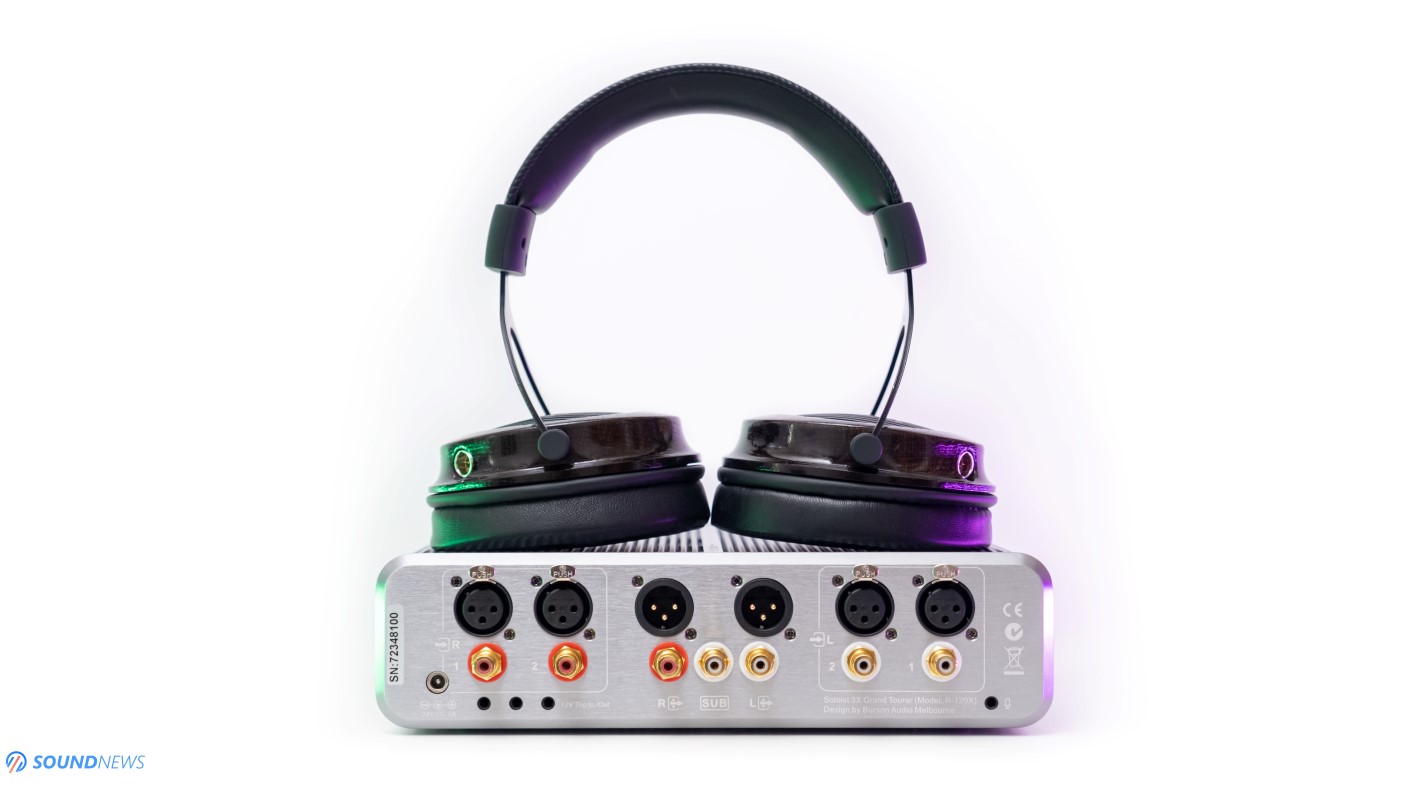
Controls & Connectivity
On its front plate you’ll find a 4-pin XLR jack, a regular 6.35 mm (1/4”) headphone jack, a 3.5 mm (1/8”) microphone input that accepts gaming headsets with 4 pole jacks. As for buttons, from left to right there is your On/Off button, input selector, output selector, settings and flip the screen button. The volume wheel works in digital domain and offers 99 steps, so no more guessing how much power is there left on tap. You can spot a monochrome OLED screen that is located exactly in the middle, it’s fairly small, but thanks to a bigger font, everything’s visible even from afar. It will show all the important stuff as the volume position, the selected input, output and gain setting.
Ever wondered why I’m using my Benchmark HPA4 in basically all my DAC comparisons? Because it has four pairs of analog inputs, two single ended and two balanced inputs, so I can easily compare two or even four sources at once. Burson Audio followed my advice and armed it with the same configuration and I’m genuinely glad that Soloist GT offers so many analog inputs. It can also work as a dedicated preamplifier, providing a pair of variable XLR and RCA outputs, including a sub-woofer output. Besides that, you can spot three triggers, an additional microphone input and a 24V 5A DC input that will be powering on the unit.
As you can see, it can be used either as a headphone amplifier or as a preamplifier, which should cover all our stereo and personal audio needs.

Display settings
With the included metallic remote you can change its volume level, mute or unmute it, change the selected input and rest of the settings are controlled by entering the user menu, where the following settings can be accessed:
- Input: RCA1, RCA2, XLR1, XLR2
- Output: HP Out, PRE Out, HP + Sub-woofer Out
- Gain: Low, Medium and High – It will impact the gain of your headphone and preamplifier output
- LR Balance: Balances the Left and Right channel just in case you have hearing loss in one of your ears. This again works with headphone and preamp outputs
- OLED Level: Low, Mid or High – sets its brightness level
- Crossfeed: Off, Low, Mid or High – half century old recordings weren’t made for headphone listening and you might experience an extreme stereo effect that doesn’t position the stage in the middle. For that reason, you can play with its crossfeed settings and make those recordings less fatiguing in long listening sessions
- Remote: On or Off – self explanatory
- Reset Set: Yes or No – resets to factory settings
- Auto Off: Off keeps its display engaged at all times, On shuts down after a few minutes of inactivity
Most of these settings are set and forget, but thumbs up for implementing such a nerdy user interface.

Soloist 3X VS Soloist 3X GT
I know that many of you are scratching your heads right now asking a very simple, yet important question: why do I need the Grand Tourer, when I already own a great sounding Soloist 3X? A simple question that leads to a complicated answer, but to make it easy, I compiled a short list that will explain you the biggest differences.
- Inside the GT, there are two independently powered mono amplifiers outputting 10 Watts per channel for the hardest to drive headphones. They are placed in mirrored symmetry to achieve the highest possible channel separation. Two things are coming into my mind: Headroom and Soundstage, but more on that later. Soloist 3X doesn’t use a mirrored symmetry, nor does it output so much power, 3X caps at 8 Watts per channel.
- There are five sets of Burson proprietary Max Current Power Supplies (MCPS), each tuned to maximize performance, so much so that they need active cooling. By comparison, 3X has only three sets of MCPS.
- To eliminate channel crosstalk (L and R channel bumping into each other), each channel has its own MUSES 72320 + V6 Vivid discrete buffer volume control. So far, this is the only headphone amplifier that I know that sports two top-of-the-line Muses 72320 volume control chips – which by the way can be spotted in world’s best preamplifiers. By comparison Soloist 3X has just a single Muses chip and obviously a higher channel crosstalk.
- The GT can emulate speaker like listening through three levels of hardware-based crossfeed. If you’re into ’60-ties blues and jazz as I am, you know what I’m writing about in here. Soloist 3X doesn’t have such a feature
- GT’s preamp allows the volume of each output to be change separately. Burson calls it soundstage centering for speakers.
- Last but not least, in case your ears aren’t flapping already, the GT allows for Headphone + Sub-woofer listening. On a more serious note, owners of RAAL SR1a and Mysphere 3.1/3.2 could improve their listening experience with the Soloist GT. A neat feature that (sadly) I cannot test as of right now.
This pretty much sums the key differences, if you want the most powerful, yet clean sounding Burson amplifier, then GT is that unit.

Under the hood of Soloist 3X Grand Tourer
Its no secret to anyone that we’re (again) dealing with a fully discrete, fully balanced input to output preamp and headphone amplifier stage that works in a deeper Class-A operation to anything they’ve done before. Op-amps were banned for good, otherwise Burson can’t sound good as solid state should. Its amplifier stages were driven to their maximum, leading towards a warmer case that needed active cooling for a proper heat dissipation.
From input to output the signal path remains balanced and if you want the best performance with the lowest channel crosstalk, then use its XLR inputs and outputs for the best results. I’ve spotted 8 output transistors, two per module and it has four of them for a fully balanced signal. It outputs some very serious power, more exactly 10 Watts per channel on its balanced output and half of that on its single ended output, making it the most powerful Burson headphone amplifier to date. They used four discrete V6 Vivid op-amps at the input stage and two are buffering its volume control chips. It doesn’t use one, but two elitist MUSES 72320 volume control chips, that can be found in the world’s best preamplifiers. The same ones are sitting inside the Pass Labs XP-30 ($16,500) and AVM Ovation ($9,000) preamplifiers.
Burson improved the precision of its volume control and increased channel separation, that Headphone Power Amp Mode of the Soloist 3X was no longer implemented in here. Channel separation went up and a dedicated preamplifier is no longer needed for a perfect channel balance and precise volume control. My biggest desire with 3X was a lower channel crosstalk and it seems that my wish came true.
Don’t get upset seeing that external switching mode power supply, because its actual power supply is sitting inside the unit. Soloist 3X GT uses a total of five MAX Current Power Supplies (MCPS for short) that Burson developed and included for the first time in their Conductor 3R. Those are raising the voltage frequency from 50-60 Hz to 170 kHz, pushing the noise floor far beyond human hearing and its low impedance ensures abundant and instant energy on the spot. However, if you want the darkest background and the lowest possible noise floor that would increase its detail retrieval, then you should consider getting that Super Charger 5A.
The GT uses three V6 Vivid discrete op-amps per channel, achieving an incredible driving force and transparency, but if you’re into op-amp rolling, you can do that too. You can make it smoother and calmer sounding by going all-in with four V6 Classic op-amps. Mix and match, play with different flavors, use different brands, just remember to use only dual op-amps.
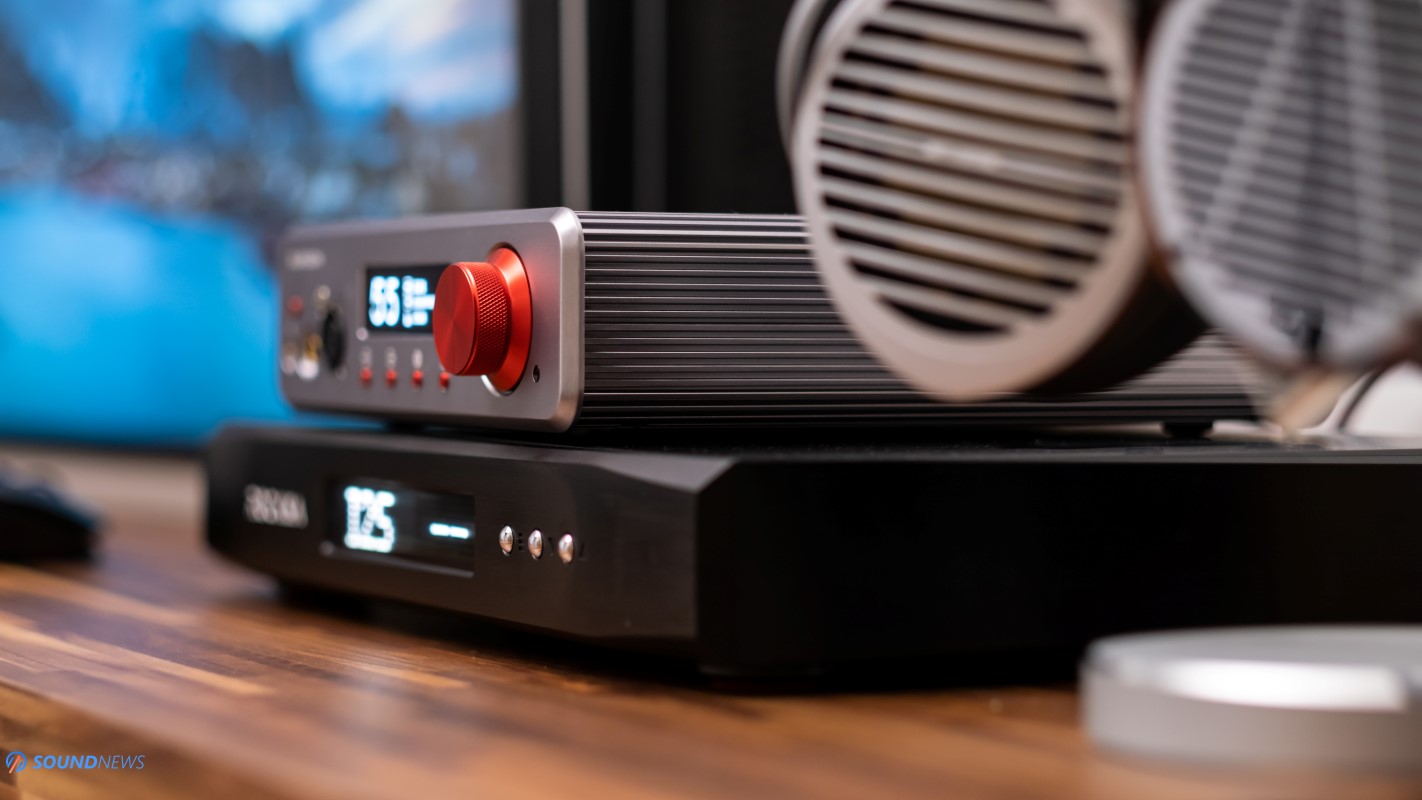
Test Equipment
Soloist 3X GT is a high-end solid-state amplifier and that is why I decided testing it with every headphone I have at my disposal. I will be testing its noise-floor with ultra-sensitive IEMs, I’ll move to portable over-ears and lastly, all sorts of desktop headphones will be hopping on my head, ranging from affordable dynamics to high-end planar-magnetics. In some of the latest parts of this review I’ll be driving the hardest headphone I have in my stable: the notorious Hifiman Susvara.
To squeeze the last drop of performance out of it, a high-end rig would be needed and that’s why my PC was feeding up a Singxer SU-6 DDC followed by a Rockna Wavelight/Audiobyte HydraVox DACs and then by the Grand Tourer itself.
At this point, there are several matching headphone amplifiers that could brawl with it for a few rounds and it the later stages, you can expect select comparisons with some of the best solid-state amps out there.
Alright folks, my body and ears are ready for some music, so let’s hit some eardrums!
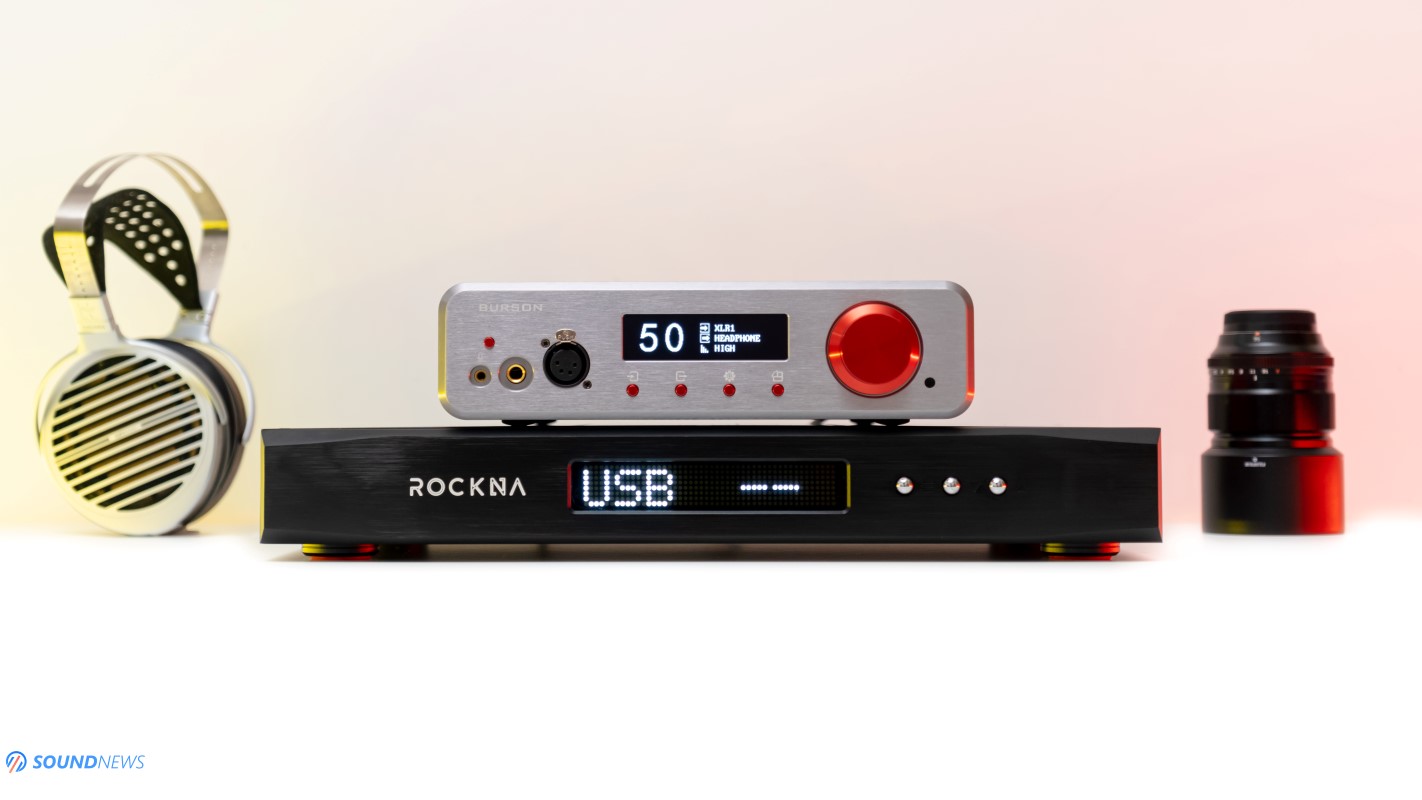
Sound Performance
I. Preliminary Sound Impressions
I’ve got the Soloist GT about three weeks ago and all this time I’ve hid it from the eyes of my cameras, as I wanted to surprise you with its vivid color scheme. Instead of leaving it play for a week attached to a laptop and to a pair of Apos Caspian prototype (still have them around), I decided listening to it day after day and swapping it with the Ferrum OOR and Hypsos on several occasions. I’m not sure if Burson guys left it play in their labs for several days or not and I’m not sure if that Super Charger 5A played some tricks on me, but Hamlet’s last words immediately hovered around me: “The rest is silence!” Indeed! Dead silence was all I’ve heard and a sky-high detail retrieval that usual all-discrete amplifiers don’t highlight as much. This is really what differentiates it from all their past amplifiers. Conductor 3R was clean and I never found it unacceptable with IEMs, but it didn’t deliver a pitch-black background, nor a highly resolute performance, Soloist 3X further lowered its noise and brought to the surface tiny nuances that were previously unheard of, but the Grand Tourer brought the night once music started playing, like a dark prince it is.
“Roots, Bloody Roots!” – was the second idea that popped around me, as Grand Tourer is very much a Burson unit and its birthmark is too big to ignore. If you’re getting bottomless and rumbling bass notes, smooth vocals, wild headbangs and air guitars, while drowning treble grain, then you are definitely listening to a Burson made amplifier. The family resemblance is quite big, but it was updated to be in line with the best solid-state amplifiers out there. Grand Tourer felt to me as a Shift+Delete your Head-Fi account type of amplifier, there is a lot to praise about it and very little to nitpick. When it comes to pure sonics, finally I’m getting a massive left to right soundstage, something at which Burson designs weren’t that impressive, as they never stood on an iron throne near their competition. I’m getting so much more in terms of details, there is finally a see-through transparency and things that were previously blurry in the background are now crystal clear and contoured. If you like hearing things that you are not supposed to, then GT appeared clearer sounding than all other headphones amplifiers that were sitting on my table, with the exception of the Benchmark HPA4 that further nulls conventional distortions with its feed-forward error correction topology.
I’m glad that crazy and wild dynamic swings are still on board, you should definitely hear this bad boy with Audeze’s and what it does to them. I don’t recall hearing my LCD-4 so energized and full of life. Once LCD-4 are hopping on my head driven by the Soloist GT, a minute wouldn’t pass and I would already head-band and toe-tap, it rushes that dopamine like morning coffee and it does that in split seconds. You can’t refrain from smiling whilst listening to it, those dynamics are really something, especially when Super-Charged with 5 Amperes of clean current.
I personally don’t enjoy overly smooth, plain slow and mellow sounding amplifiers, give me a dopamine rush above anything else and it seems that the Grand Tourer as its name suggests, roams the fields as a wild mustang, refusing pressing the brakes or being domesticated. With Grand Tourer, expect an exquisite transient response, being equally impressive in terms of speed and decay of the notes, but also when landing precise punches onto your eardrums. It got the nerves, there’s an impressive impact to be had with planar-magnetic headphones, as it shifts gears like a sports car.
When The World Could be Falling Down by Madrugada (Qobuz / Tidal) appeared on my playlist, I was casually browsing around with Susvara on my head, but when snare drums started hitting…I couldn’t browse anymore. I realized that only a statement amplifier that doesn’t limit dynamics would land such critical hits on my eardrums. Please give it a try with your own amplifier and if it doesn’t make you jump from your chair like GT does, then you know what is slowing you down. The bass lines and drum kicks that were previously buried deeper, were considerably more defined now and it pushed those notes away from me, so I could look at a bigger picture. Imagining and soundstage improved tremendously and dynamics never felt subdued. While this is not some audiophile worthy material, the Grand Tourer made it so, changing it forever.
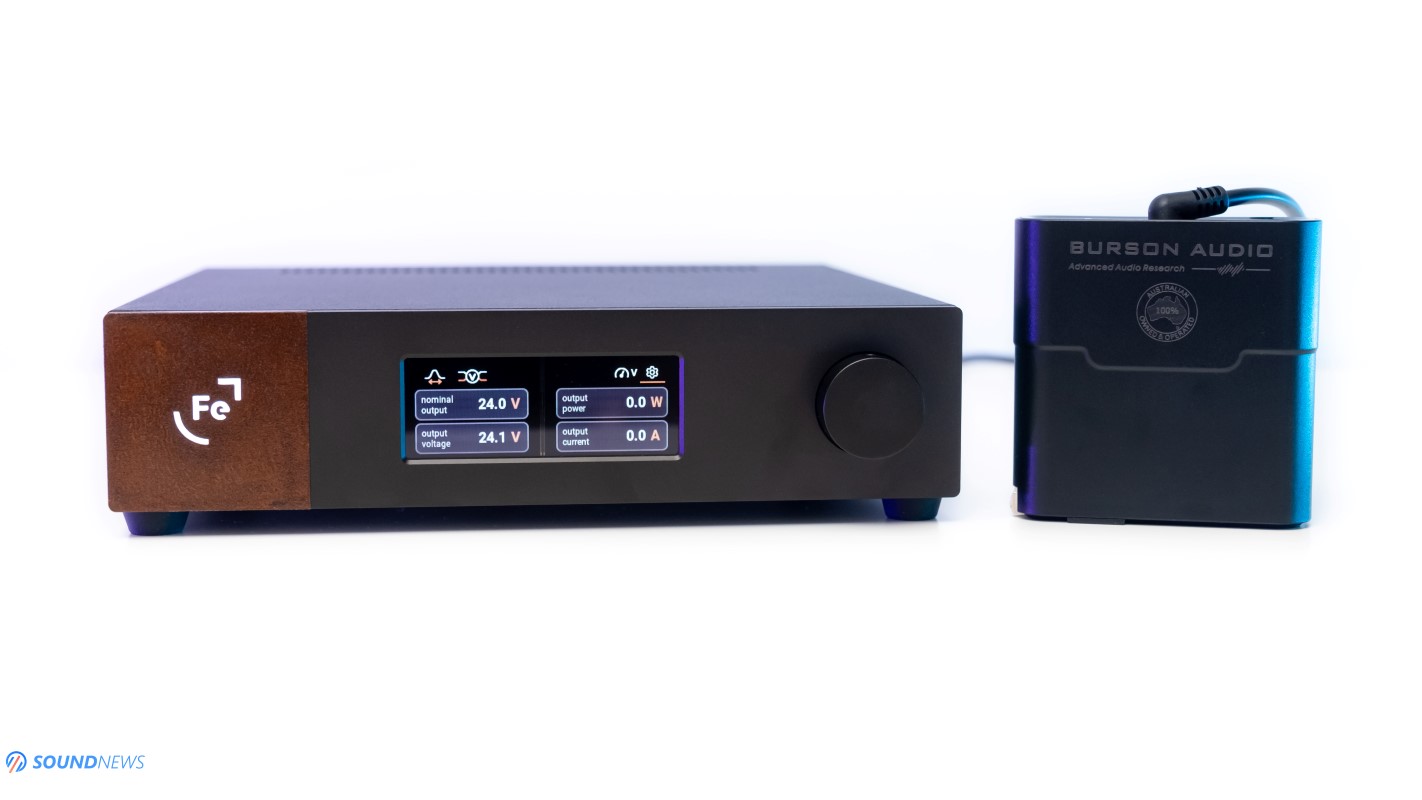
II. To Super Charge or to HYPSOS?
For the last two weeks I’m being bombarded with emails asking about the Soloist GT, most are asking about the benefits gathered with the Super Charger 5A and others are asking about the improvements made by the Ferrum HYPSOS power supply, especially if any of those can further elevate GT’s performance. Without further ado, I will be replying to all those emails with a chapter that anyone can read.
Before telling you about those power supplies…You should know who I am and what I did first. When we moved to our apartment around ~3 years ago, the absolute first thing I did was replacing every single wire from the walls, with much thicker single crystal copper wires of a higher purity. The entire electrical system was replaced with a new one and I made sure that my office uses a dedicated power line that doesn’t interfere with the rest of the house. I used even thicker copper wire in my office and two separated fuses, one for my PC and peripherals and one for my audio equipment. Although costly as hell, it improved my listening experience…but still, at night my music was livelier sounding and the background felt blacker. Challenge Accepted! I said to myself and a year later, I was rocking a Plixir Elite BAC400 passive power conditioner in my headphone setup and a Plixir Elite BAC1500 in my stereo and you guessed it! Finally, my music sounded alive in daylight and I’ve never heard gremlins ever crawling into my audio equipment.
A. Super Charger 5A
Audio equipment is extremely sensitive to electrical and electromagnetic noise and that’s why I never economized on clean power delivery. Stop the noise at the inception point until it becomes a much bigger problem, as once it enters your chain, no power cable can help you anymore.
Does it mean that Super Charger 5A or Ferrum Hypsos wouldn’t further improve GT’s performance? Of course, they will! You see, only half of GT’s power supply implementation is sitting inside its case, those five Max Current Power Supplies are trying to deliver clean power to its amp stages, but if dirty current crawls inside, it will be partially cleaned up and this is where Super Charger 5A gives Mr.Clean a helping hand. It’s complicated giving an exact number to what I’ve experienced, but I’d say GT’s performance plunged higher by around 10%. Immediately I’ve felt a lower noise floor and a higher detail retrieval. Dynamics didn’t improve as much, but background felt blacker and transparency took a step forward, shining a light on the smallest nuances, so I still experienced a decent improvement. However, if I wouldn’t have dedicated power lines and passive power conditioners, then the improvements would be much higher. It really depends on the quality of your power lines and on your location, but all things considered, Super Charger 5A still felt as worthy improvement and a must buy purchase down the road.
B. Ferrum Hypsos
Attaching it to the Ferrum Hypsos was an easy-peasy process, just select manual configuration, center pole positive, a 24V voltage and the rest was done by the Hypsos. I’m getting a power output reading of around 63 Watts, with a current output of 2.6A, but of course those numbers are going up or down depending on dynamic swings. Put some bass intensive music and see those gauges going higher or vice versa, relaxing music will lower its power output.
In all honesty, I expected hearing a big change with the Hypsos and the change was definitely there, but it wasn’t as big as I expected and it didn’t warrant purchasing the Hypsos separately. This is an expensive power supply, coming at $1200 for the same amount you can buy separately a Composer 3X or a Soloist 3X. However, it needs to be said that if I wouldn’t have all those power improvements, then Hypsos might further elevated GT’s performance over the Super Charger 5A. In my case, Hypsos didn’t improve dynamics – as I hoped, it didn’t lower the noise floor or increase transparency, but the trebles felt…even more natural, a slight metallic ringing that was present on 5A was completely absent on the Hypsos and that made it completely grain and brightness free with Hifiman headphones. If squeezing the absolute last drop of performance out of your GT is one of your goals and if you don’t have any power filtration/regulation stages at your place, then…Hypsos doesn’t look as expensive anymore. With that being said, Super Charger 5A looks like a much better deal to me and you can’t go wrong with it.
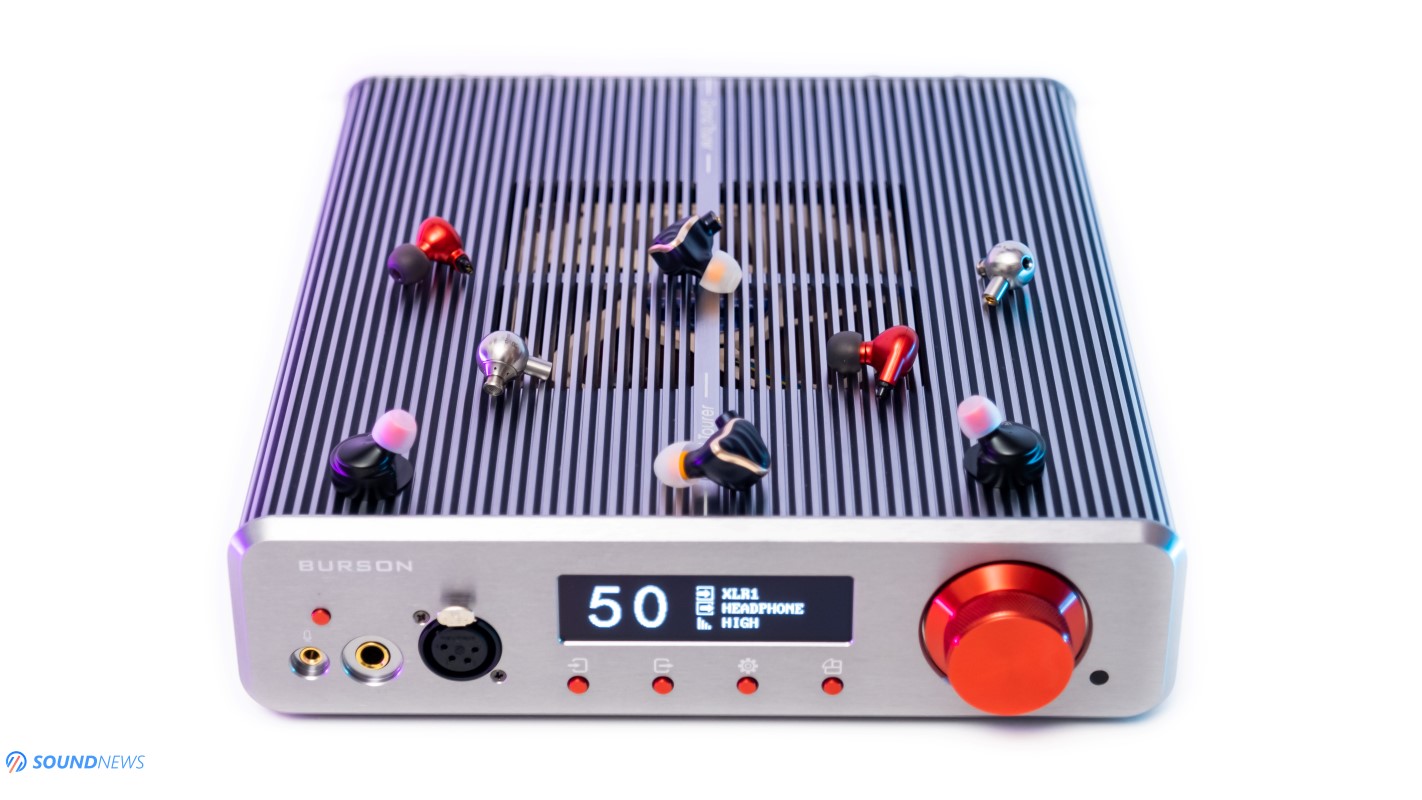
III. Background Noise & IEM Compatibility
Alright folks, this is an easy one. When power goes up, noise and distortion go into the same direction, this is how all amplifiers are working. Since Soloist GT is so far the most powerful headphone amplifier ever made by Burson, I would be surprised hearing a dead silent background with ultra-sensitive IEMs (113dB per 1mW or higher). All their creations had a tiny bit of residual noise with easier loads and Soloist GT is really no different. Attaching the Super Charger 5A or Ferrum Hypsos didn’t make it noiseless, as on low-gain there was a smidge of residual noise when music wasn’t playing. Pressing play and leaning back, obviously I cannot spot it anymore, but my OCD kicked-in immediately, making me uncomfortable knowing that sensitive IEMs aren’t getting what they deserve. Don’t get mad about this, as all other class-A amplifiers that didn’t use noise shaping techniques performed more or less the same, with the exception of the Singxer SA-1 that was noiseless as Muscovy ducks across the board.
With FiiO FA9 – which are currently my most sensitive IEMs, I detected a barely audible hum on low gain, mid and high gain had it higher and after engaging its user menu it became even louder, suggesting that its microprocessor adds noise when user menu is being accessed. Another thing to mention is that even on the first volume position it was already moderately loud and there was little to no room to play with sensitive IEMs. I’ve played around with user settings while FA9 were still being connected and it didn’t matter if I was enabling or disabling crossfeed & channel balance, as the slight hum was still there and dimming its display after minutes of inactivity didn’t lower its noise floor as well.
All the signs are pointing towards one thing: Soloist GT, as all its smaller brothers weren’t made to be used with sensitive IEMs and that is perfectly fine. All Burson designs weren’t bad, after all, the noise floor was barely audible on the low gain, but they weren’t exactly IEM friendly on their own. You can solve this issue once and for all by adding an iFi Audio iEMatch+, this trinket is really a must-have accessory if you’re using IEMs with desktop gear.
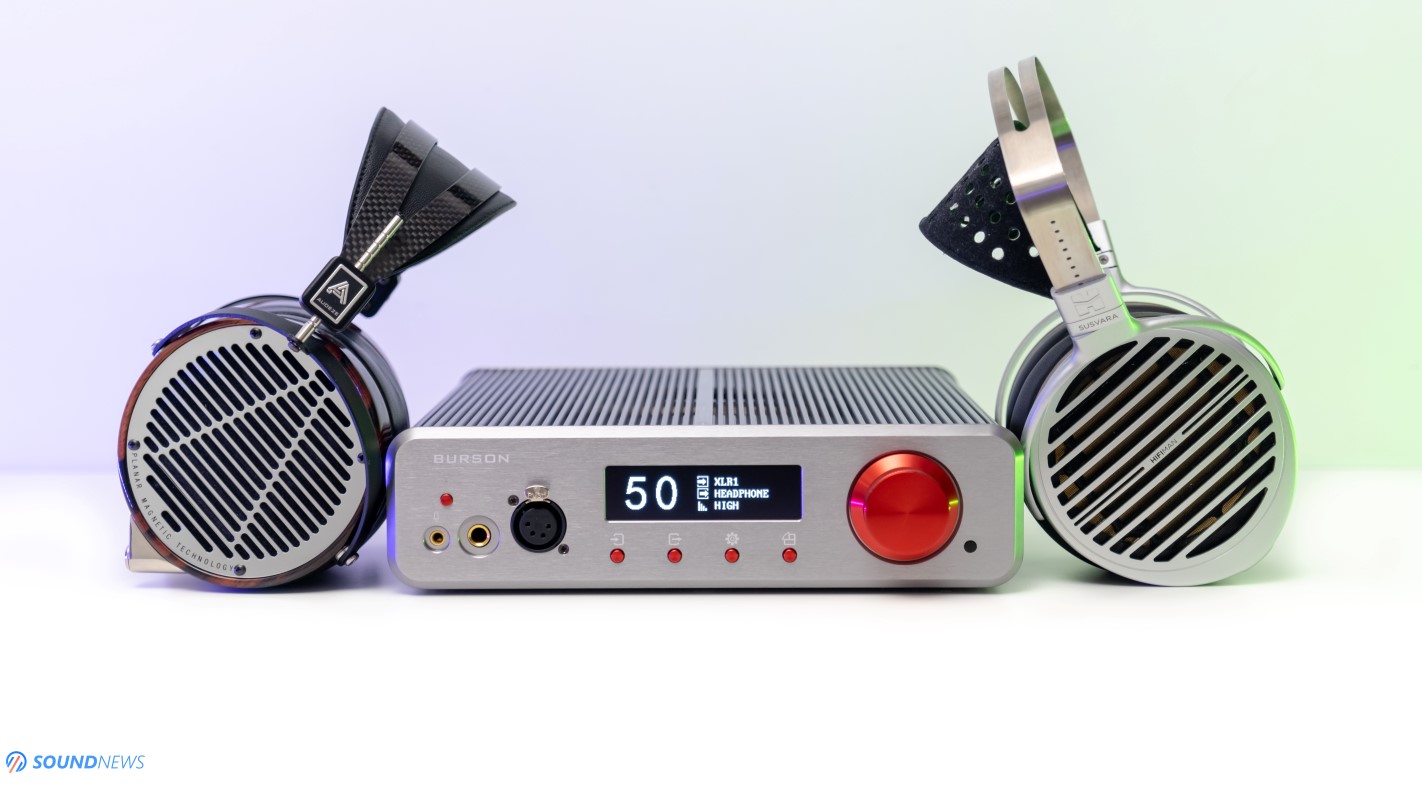
IV. Power Output
Without a single doubt, 2021 was the best year for us, headphone enthusiasts, as several companies released top-of-the-line headphone amplifiers and Burson Audio is one of them. Luckily, I have around some of those amps and I will be comparing them in the latest chapter of this review. While Soloist GT is not the most powerful amplifier out there, I believe Flux Labs Acoustics Volot together with the newest Audio-GD M9P still hold that title, Soloist GT never felt out of breath with any of my headphones and it was never lacking dynamics, including with the notorious Hifiman Susvara.
Obviously not all power is made the same, raw power numbers tell only a small portion of the story, as distortion numbers and how clean is that power are considerably more important things for a trained ear. Soloist 3X was already a very powerful unit and it appeared more powerful to me versus its declared output and the same can be said about the GT. 99% of my headphones didn’t even need high-gain and I was rarely going past its 60-volume level out of 99. I’ve felt an impeccable control over headphone drivers, there was plenty of headroom remaining on tap and it always sounded effortless, never straining my ears. With the right music and digital front end (Singer SU-6 + Rockna Wavelight over I2S) it was going in and out in-a-flash, pressing that gas pedal to the floor when dynamics came out to play. There was an abundance of air and everything felt perfectly layered, like I was listening to some binaural recordings and not to usual stereo tracks.
Flux Labs Volot and Ferrum OOR + Hypsos already changed my preconceptions about headphone amplifiers and I’m adding Burson’s Soloist GT in the same (short) list of amplifiers that could drive every single headphone without tiring you down. While Susvara stays mostly on my head, as it sniffs system flaws from a mile away and magnifies them, I must confess that on evenings a pair of Audeze LCD-4 or Kennerton Rognir planar would hop on my head and disconnect me completely from the outside world and my daily tasks. It’s difficult explaining with mere words why I’m doing that, but I belive all the things combined just made me enjoy music on a higher level, never feeling that something was missing or lackluster. With Soloist GT at my side I wanted to have a great time in the company of my music and it delivered, no matter the headphone or musical genre. It was putting logs on fire with impactful tunes, relentlessly pounding my eardrums and it was slowing down with blues and jazz, trying to relax me with its dense midrange, full-bodied bass and extended but natural treble rendition. LCD-4 were particularly impressive on it, so much so, that I belive Burson designs were tuned with Audeze’s first. Compared to the rest of their doings, GT goes with a reference tuning, (putting a higher accent on transparency and detail retrieval) trying to remain as honest as possible in its presentation, it never felt lit up-top (id est bright/harsh) and it never felt plain boring sounding to me. That invisible all-discrete mojo still wraps my entire music collection, going with a powerful, yet effortless presentation.
From a decent collection of headphones, there wasn’t a unit that wasn’t radiating positive vibes and make me move while listening to music. It nicely controlled them, pushing and pulling their membranes as if driving ordinary portable headphones. It’s unnecessary mentioning those headphones as they performed equally well, bringing to the surface all their pros and cons, while providing unlimited headroom for all of them.
Before getting the Flux Labs Volot…I wasn’t driving the Susvara with headphone amplifiers, like at all, as most of them didn’t deliver the energy and sheer impact that Susvara was capable of. Some of those amplifiers were shutting down, many were going into clipping territory, but all of them were shy and unimpressive when dynamics were trying to reach their peaks. Susvara sounded more like Sundara to me on those units and I always knew the sleeping beauty inside them, especially when a bigger amount of clean power was being delivered to them. Without further ado, Soloist GT drove the mighty Susvara on high-gain and my usual listening level sat in between 55 and 70 out of 99 steps available. Dynamics weren’t botched as HPA4 was doing, the sound stage didn’t collapse on me and sub-bass layers finally started appearing one after the other. It felt slightly more energetic sounding to the Flux Volot and more or less the same to the Ferrum OOR + Hypsos stack, which are great signs in my book. As far as headphone amplifiers are being concerned, Soloist GT can drive the Susvara and I’ll be soon updating the Susvara review and its complimentary amp tier list. It’s difficult quantifying its performance in numbers, but I’d say it was squeezing about 91 to 93% out of Susvara compared to what they are capable of. Putting them on two Benchmark AHB2 power amplifiers in bridged mode would deliver 100% in terms of dynamics, but at $3000 a piece ($6000 in total), that shouldn’t come as a surprise.
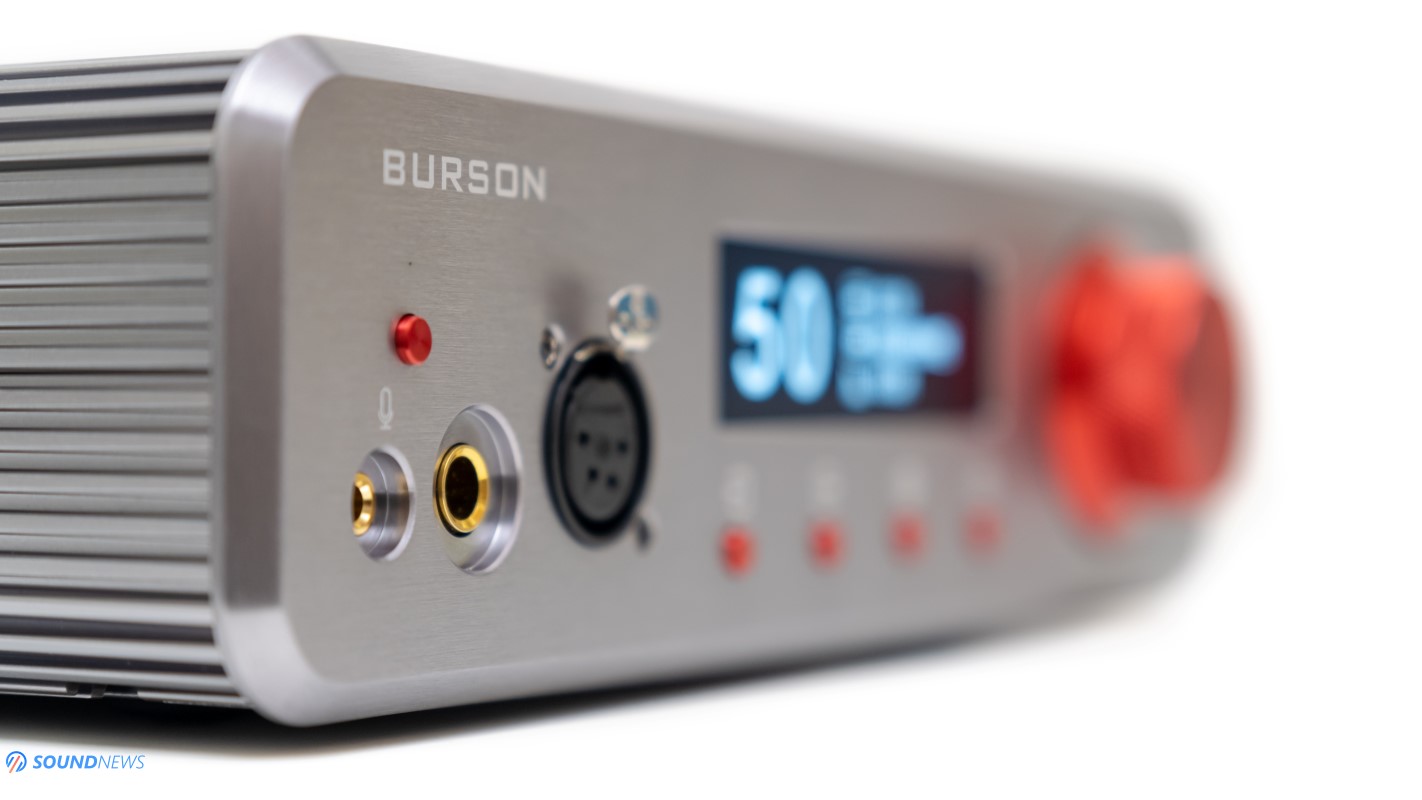
V. Transient Response
I’m getting chills and goose bumps only when music speaks to me and when the lowest bass notes are being delivered and sustained in an effortless manner. If I’m not getting the All-Inclusive treatment from an amplifier, then it’s Dead On Arrival for me. This is who I am and that’s precisely why this chapter is important to me.
If you checked any Burson unit by now, you already know that they’re notorious for having an excellent sense of speed, rhythm and timing. Even starting with smaller units as Playmate 2 and Funk, you know you’ll be getting some thumps in your chest, but GT is doing that even better. Soloist 3X was already glowing bright with its rock-star personality, especially with fast & impactful tunes, but Soloist GT is a scarier creature, as stronger and deeper bass notes were landing on my eardrums. It felt merciless with my usual electronica tracks and this is what I listened to mostly on the GT. From a substantial number of headphones amplifiers, only Ferrum OOR + Hypsos can stand a chance versus it, as the rest didn’t reach the same bottomless bass pits, nor deliver the same body impacts. This isn’t a novelty to me and it shouldn’t be to you, as all Burson amplifiers are known to be impressive in this department. Long story short, if you’re craving for one of the most impactful sounding headphone amplifiers, then Soloist 3X GT is up there with the best units and personally for me, it fights for the first or the second place.
Suddenly some of my amplifiers became mellow, others relaxed, linear and only few impactful and outstanding from any point of view. With mid-tier dynamic headphones, I couldn’t differentiate them as easily, but Hifiman Susvara responded immediately when a higher quality power was passing through them. In my case fully-discrete Class-A and AB amplifiers worked the best, adding a hint of midrange presence, a machine gun like speed and a thunderous slam and impact.
While listening to the latest album by Iron Maiden – Senjutsu (Qobuz / Tidal) you can feel its dark and less than perfect production. While this is a mid-paced album, leaning towards progressive and atmospheric metal, Soloist GT together with Hifiman Susvara still raised some hair on my arms and horns on my palm, sending my right foot into a toe-tapping fiesta. Dickinson molded his vocal lines in such a way, that he would rarely reach higher registers and considering his age, that’s perfectly fine. While, he’s not in his prime anymore, he is still a powerful force to be reckoned with and you can feel that when lower registers were being reached. Stratego tries to reinvigorate the whole album with up-tempo moments, sending shivers through my spine while mercifully punching my eardrums. Very few amplifiers can render rock and metal the way I like it, but Soloist GT was made for music like this, rocking my boat and infusing plenty of positive energy for the rest of the day. This album is slowing down towards the end, building an atmospheric, almost eerie feeling. This is still a Maiden’s album for Odin’s sake and the end result is a solid heavy album with atmospheric and progressive ideas placed carefully around, performed by an experienced crew, but never delivering inspiring compositions. After sucking a lot of energy due to a lackluster production quality, we’re left with a decent album that was almost cured by the Soloist 3X GT.
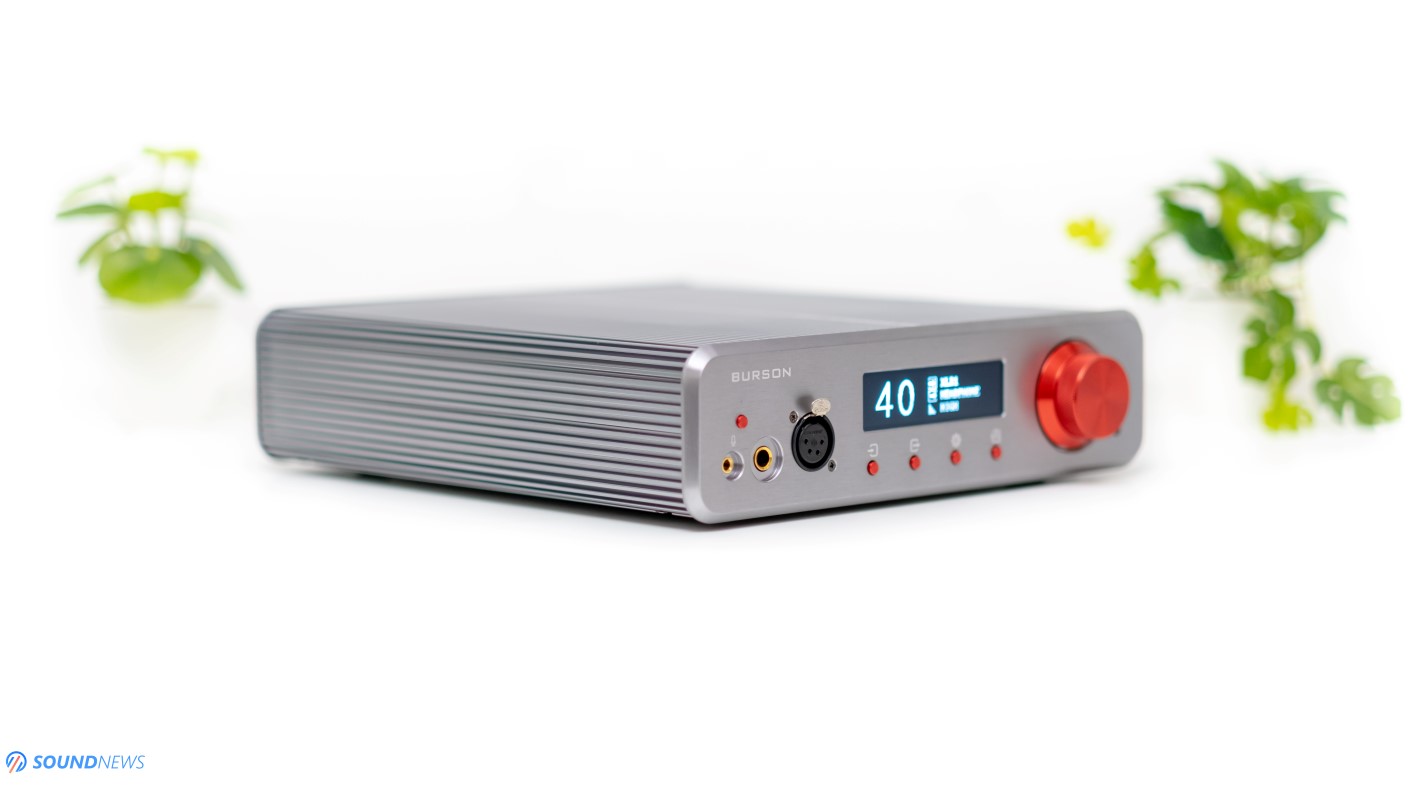
VI. Resolution & Transparency
Burson did everything they had in their power to lower the noise output and the channel crosstalk. We’re getting five MCPS’s and a top-of-the-line volume control consisting of two Muses chips. On top of that, Super Charger 5A is also drowning the noise floor as much as it can and we’re getting an incredibly clean and transparent amplifier that could easily brawl with the cleanest amplifiers out there like Benchmark HPA4, Sparkos Labs Aries, Topping A90 and SMSL SP400. GT felt as a big departure to any of their amps, especially when it comes to distortion and detail retrieval.
With the Super Charger 5A in place, the noise goes completely out of the picture and rocking a higher signal-to-noise-ratio, good luck finding traces of distortion even at higher volumes, as you will be listening to the limits of your DAC, headphones and of your ears. Living for quite some time with clean sounding amplifiers, I am not that easily impressed and yet Soloist GT revealed itself as Mr.Clean, being completely transparent, disappearing from my acoustic chain, while fully preserving all the tiniest details and nuances. I have the highest respect for audio components that aren’t adding distortion. With such devices I will be listening only to the truth and to the recording itself and the GT can be easily included into that list. A high transparency goes hand in hand with detail retrieval, so it wasn’t a challenge finding micro-details in my tracks that I know for a lifetime, revealing themselves easily without flexing my mind. Soloist GT is one hell of a clean sounding amplifier, so you can easily focus on whatever you please. There is one thing I like more on the Soloist GT compared to amps that are using noise shaping techniques and that is how pleasing and natural it can sound. There is some dryness, a lack of liquidity and natural textures while listening to a Topping, SMSL, Gustard or Benchmark amplifier, but Soloist GT doesn’t have any of that. On the flipside, you won’t find a heavy-weight midrange or a smoothed out treble delivery, it does that at a much lower scale, as it still goes with a reference tuning. There is indeed a little of that Class-A sound that feels powerful, effortless and easy going, but it isn’t overly done. I still find it neutral, but in a good way, carrying plenty of emotions, presenting all the treble information you can wish for, without a hint of brightness. With the GT, I know that I’m listening only to the truth and it always offered the last drop of information. I can go on and on about how transparent and detailed it sounded as there is no other way to describe it.
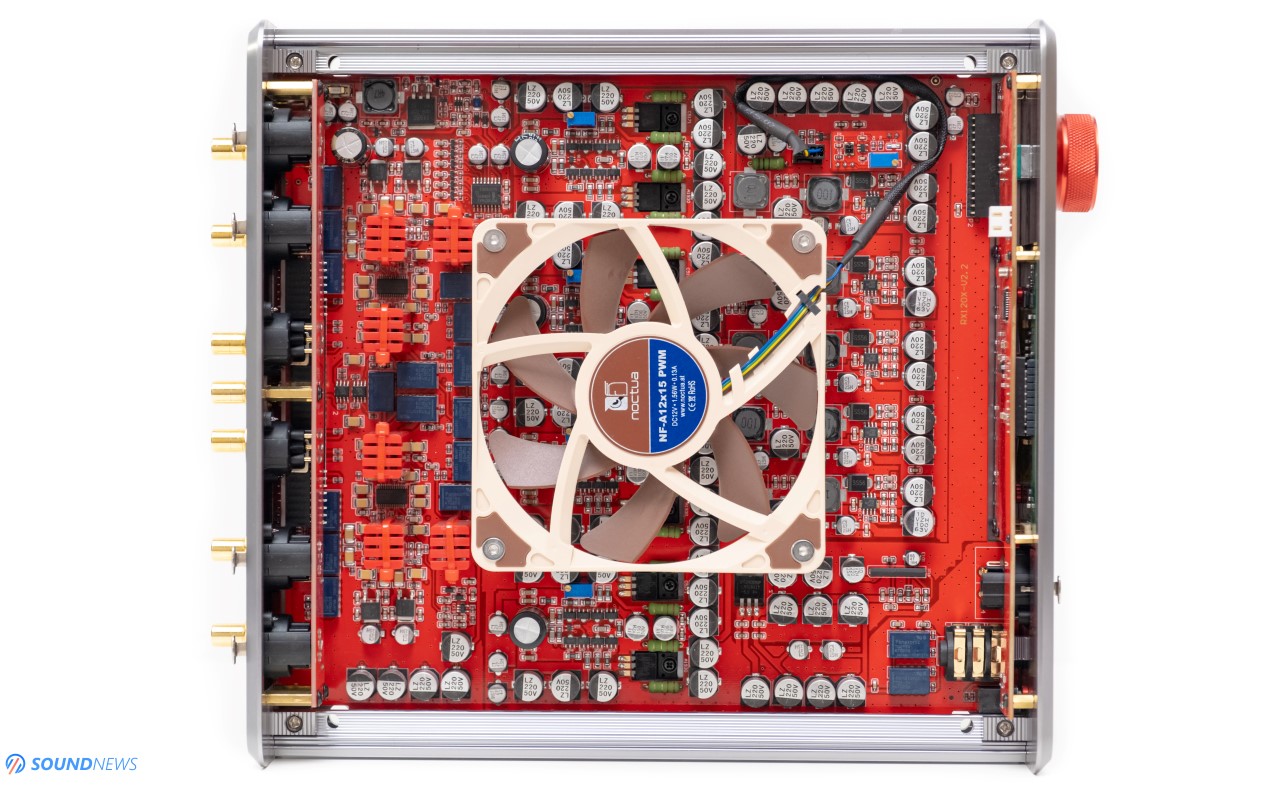
VII. Soundstage & Depth
When listening to loudspeakers, the channel crosstalk of an amplifier doesn’t matter that much, because the sound coming from the left speaker can be heard with your right ear, but you don’t want that in your headphone setup, as besides distortion, the biggest enemy is the channel crosstalk of your amplifier. You want your crosstalk as low as possible so you can get the widest possible soundstage. This is one of the reasons balanced power concept moved to headphone amplifiers a decade ago. Without much fanfare, I’m letting you know that Soloist GT outperformed all their past doings without the right to appeal, even my Benchmark HPA4 sounded smaller and the Sparkos Labs Aries did the same. All Chi-Fi amplifiers coming from Topping, SMSL, Gustard, Soncoz and Singxer cannot compete with the GT when it comes to sheer scale of my music. There was just a single unit that outperformed it in here and that my friends was the Flux Labs Acoustics Volot. If a wide soundscape is important to you, then Volot sits undefeated on an iron throne and I’m not sure if its huge capacitance or overkill power supply were the biggest benefactors.
Nonetheless, Soloist GT was easily stretching wide my music, showing the limits of my own headphones. With GT at my side, it’s so relaxing doing headphone reviews, as it reveals their true nature and pushes them to their limits. Putting air in between the notes or sending layers after layers of music wasn’t a difficult task for the Australian amp as it refused to sound closed-in even with bad mastered music. I’m yet to hear a closed-in sounding all-discrete Class-A amplifier and as far as solid-state amplifiers go, you can never go wrong with such a working principle. Compared to its older brothers, GT was biased into a deeper Class-A operation, there is more current output on-board and that can mean only one thing: It will increase or decrease the stage size depending on your music. On live music it will easily untangle and decompress it, putting musical notes on individual shelves like books in a bookcase and for this reason, I would always have at least an all-discrete amplifier on my desk.
A few weeks ago, a remixed version of Let It Be by The Beatles (Qobuz / Tidal) was released on major streaming platforms and I decided going through it several times to better feel its production values. You can find the Super Deluxe version on several streaming platforms, but Qobuz will be delivering the best (24-bit 96kHz lossless) version, which sounded mighty impressive from the get go. Two Of Us and Let It Be are some of the tracks that I’m listening on the monthly basis and never I have believed that all the background noise of older recordings can be magically removed in the digital domain, but I guess…miracles can happen. Everybody knows that Let it Be is far from their best work, but this re-issue sounds absolutely terrific, removing all the grain, hiss and noise, while adding some air in between the notes, so it could sound fresh and new again and that was immediately picked by the detailed nature of Soloist GT.
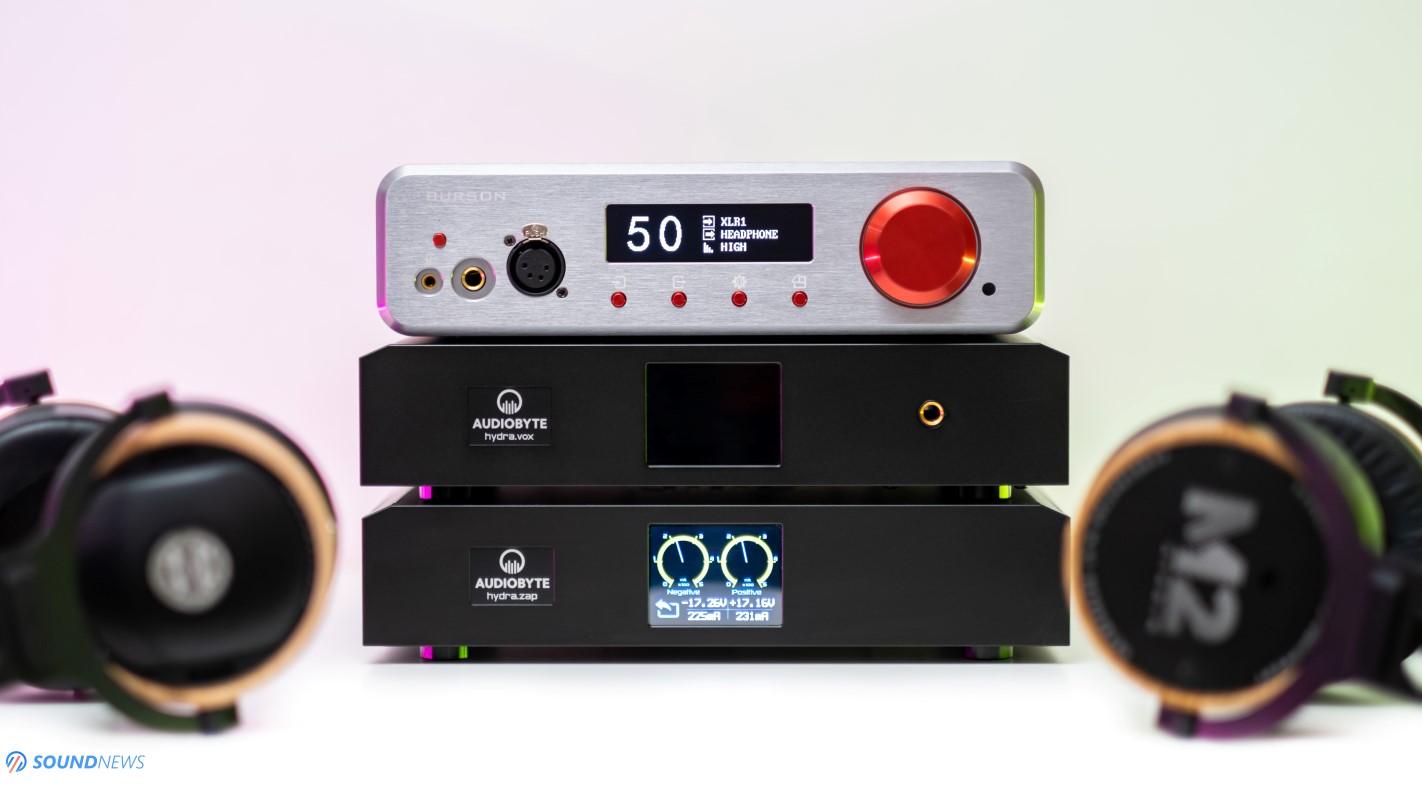
VIII. Frequency Response
A. Bass
After swapping the Soloist 3X with the GT, I’ve immediately felt a (much) higher bass quality. I was getting the signature Burson bass quantity, but this time around, it felt clearer and way more refined. The interesting part is that even entry to mid-level headphones picked that up immediately. Hifiman Sundara isn’t your bass canon headphones, but GT made them considerably more impactful and ultimately more fun sounding. The absolute biggest change was felt with the Audeze LCD-4 that delivered an immaculate bass performance across the board. Layers and sub-layers of bass were slowly moving around my head and it easily sustained longer bass notes. GT would be picking up the lowest intensity bass notes, boost and highlight them in a very pleasing, yet non-aggressive manner. What’s more interesting is that ever jazz and blues felt revigorated and fuller-bodied sounding to me. Those double-bass notes and bass-guitars sounded yummy and oh so present on all my headphones. In the end, I’ve got an outstanding sub and mid-bass performance, I’ve got all the quantity I desired in a clean and undistorted way. If you’re coming from a Topping, SMSL or Gustard amplifier, then the change is bigger than expected and you should prepare for a nicer bass heft and weight, plus a more natural decay of the lowest octaves. With modern electronica tunes it decayed in a split second, with older blues it sustained longer bass notes and it will be definitely changing its hide deepening on the music that is being played.
With Super Charger 5A in place I never experienced traces of veil or muddiness and this is really what differentiates a top-of-the-line amplifier to the rest of the flock and no matter from what angle I’m looking at, it’s is one of the nicest bass renditions I’ve experienced with headphones.
B. Midrange
Most of the sounds that we hear in our daily lives are lurking in the midrange region and when you lower that energy down, you are making music fake and un-natural sounding. All Burson devices are following different principles, I find them straight as a line in here, delivering a mesmerizing vocal performance and always trying to put a smile on your face. Musical instruments sounded full and textured, positive vibes were emanating from violins, guitars and piano, everything was slightly more contoured and outlined. Soloist GT added a little bit of weight in here and you can feel that even from the first minutes of play.
Its midrange section felt just right from the get go, it didn’t find it over the top or recessed and it came in right doses. It was only by a hair fuller and denser sounding compared to all Chi-Fi amplifiers and by a little bit more compared to THX-AAA amplifiers. The vocals had a natural pitch to them, female voices sounded sweet and soothing and males weighty and powerful. Burson went with a reference tuning this time around and left it as neutral as possible, but they still boosted its quality more than anything. I never felt a trace of dryness in here and everything that has to do with midrange was rendered close to the real thing. There was a tiny increase in its presence and that added more body and soul into my music, but if you hunting for a creamy and liquid midrange, then you might look elsewhere.
C. Treble
We’re getting a clean and outlined treble performance, without the usual glare, listening fatigue or digitus associated with low to mid-level amplifiers. It was never clinical sounding and it never made me clench my teeth on higher volumes. I find it detailed and outlined; it goes way past top octave and there are still driver movements happening up there. Leading edges were defined and extremely precise, cymbals and snare drums hits were aggressive and alive. Double drums went fast, those were perfectly executed, sending a nicer kick into my eardrums. In my view, Soloist GT pairs well with linear and smooth sounding setups, but I wouldn’t use it with bright headphones and D/A converters. You will not find nasty pre or post-ringing in here and while it was sharp and defined on tracks filled with tambourines, bells and cymbals, it never appeared as sibilant or edgy sounding. Imagine a clean treble delivery, without sacrificing detail, texture and naturalness and that is pretty much how Soloist GT sounded in the treble.
It needs to be said that all Burson amplifiers aren’t rolling-off treble information as it might happen with usual transistor-based amplifiers and you will be getting a little bit more presence compared to say a Flux Labs Volot and Ferrum OOR. Overall, I would describe it as sounding cleaner and more convincing to their past doings, never leaning to the warm or bright side.

IX. Comparisons
Burson Soloist 3X GT ($2799 with Super Charger 5A) VS Ferrum OOR + HYPSOS ($3190) VS Flux Labs Acoustics Volot ($2549)
If you’re a manufacturer and my words are going to offend you in some way, then please accept my apologies, but understand that I need to stay true and honest to my readers and viewers. My opinions are always my own and that isn’t going to change anytime soon. I’ll be as objective as possible, without taking into account my personal preferences. If you’re an avid reader, please enjoy the showdown.
All my comparisons are done in the morning, after a hot shower, two poofs of Audispray, a hot coffee and after volume matching them at 90dB with a proper decibel meter. All those things are mandatory for me, as I know that my hearing and mood would be at its prime.
Before putting them in the octagon, I believe all three deserve their high-end status. While there were differences and slight changes in their tonalities with different philosophies behind them, they all performed at a high level.
- Design & build quality wise all three are quite impressive, but I find the OOR stack more appealing and beautiful to look at. That Hypsos adds a lot of value, as I’m constantly looking at its screen and power gauges. Soloist GT comes next, those Ferrari red accent make it stand out from the crowd. I’m placing the Volot on the third place only because of its sheer size and industrial look.
- Soloist GT: 9.5
- Ferrum OOR: 10
- Volot: 9
- When it comes to features, this is where the Soloist GT plunges forward, as besides a three-way Crossfeed circuit for a speaker like experience, there’s a fully-fledged preamplifier inside, there are two sets of XLR and RCA inputs (so helpful when doing DAC comparisons), a sub-woofer output and you can even use your headphone with a sub-woofer if you will. Ferrum stack comes second as again, Hypsos lets you connect it to almost any DC powered audio component, you can play with its voltage output and Volot can be used only as a traditional no-strings-attached headphone amplifier.
- Soloist GT: 10
- Ferrum OOR: 9.5
- Volot: 9
- When it comes to sheer power numbers, Volot’s 16 Watts in 32 Ohms would equal to around ~8.5 Watts in 60 Ohms, Ferrum stack has it at 8 Watts and Soloist GT would provide around ~6 Watts in the same impedance. However, when Hifiman Susvara hopped on my head, I didn’t feel that either or these were lacking oomph and dynamics. Nonetheless, I will be ranking them according to their power ratings
- Soloist GT: 8.5
- Ferrum OOR: 9.5
- Volot: 10
- When it comes to timbre/tonality, this is where the Ferrum stack stood above head and shoulders to the rest. OOR & Hypsos are infusing more life in my headphones, considerably more meat on the bone, more midrange presence, while completely shelving brightness for good. OOR is literally transforming some of the lower tiered Hifiman, Sennheiser HD800 and all Beyerdynamic cans. If you like hearing a warmer, a more organic and life-like presentation, then the OOR stack is so far, unbeatable. Soloist GT and Volot are going with a reference tuning, messing a lot less with the frequency response, only boosting its quality as much as possible. Nonetheless, GT added just a sprinkle of bass and treble energy, while Volot wasn’t doing it that much – it felt as the most linear sounding amp of the bunch.
- Soloist GT: 9.5
- Ferrum OOR: 10
- Volot: 9
- When it comes to soundstage, after about 30 minutes Volot’s transistors were warmed up, capacitors were fully charged, netting you the widest soundstange and the deepest and most holographic picture. It’s power supply and filtering stages are really something else and that’s why it will always sound massive and enveloping. Soloist GT was only by a hair smaller, but it still pushed all music outside my head, for a full 3D image. Ferrum OOR wasn’t closed-in at all, but it couldn’t portray a massive scale when orchestral work or live recordings started playing.
- Soloist GT: 9
- Ferrum OOR: 8
- Volot: 10
- When it comes to transients and dynamics, contrary to their power ratings, Soloist GT and Ferrum stack appeared as slightly more engaging, easily reaching the lowest and the highest dynamic peaks. That was felt not only with reference recordings, but also with oversimplified material as electronica or rock. OOR felt only by a hair more energized and punchier sounding to the GT and Volot went down by a notch compared to them.
- Soloist GT: 9.5
- Ferrum OOR: 10
- Volot: 9
- When it comes to transparency and detail retrieval, this was by far the hardest test, as all three are sounding incredibly clean and resolute. Still, on reference recordings Soloist GT and Volot went ahead and delivered a clearer overall presentation, especially when it comes to treble information. Try Left to Right by Jean-Philippe Fanfant (Qobuz / Tidal) or No Surprises (Remastered) by Radiohead (Qobuz / Tidal). There are stronger contours/leading edges on the Soloist GT, closely followed by the Volot. With OOR, some notes were coming in a gentle and more rounded manner, like a tiny smoothing filter was applied over my music.
- Soloist GT: 10
- Ferrum OOR: 8.5
- Volot: 9.5
- Final Results
- Burson Soloist GT: 66 points
- Ferrum OOR & Hypsos: 65.5 points
- Flux Labs Volot: 65.5 points
Even if their numbers came extremely close, I wanted to highlight that these are still different sounding amplifiers in every possible way and they all have strengths and weaknesses. If you’re into linear and bright sounding headphones and want a bit more life in that midrange, while slashing treble glare out of existence, then Ferrum stack will provide you exactly that. If you need a neutrally tuned amplifier that doesn’t mess with frequency response, while sounding effortless, untangling your music and putting absurd amounts of air in between the notes, then Flux Labs Volot would be that amplifier. Lastly, if you need a slight bump in the bass and treble quality, searching for the cleanest Class-A amplifier out there that sounds fun and engaging, whilst driving your entire headphone collection, then Soloist GT would be my weapon of choice. I don’t consider that we got losers and winners in here, just different strokes for different folks. We all have distinct subjective opinions, tastes and musical preferences and that’s why, you should choose your amp wisely that matches with your needs and listening habits.
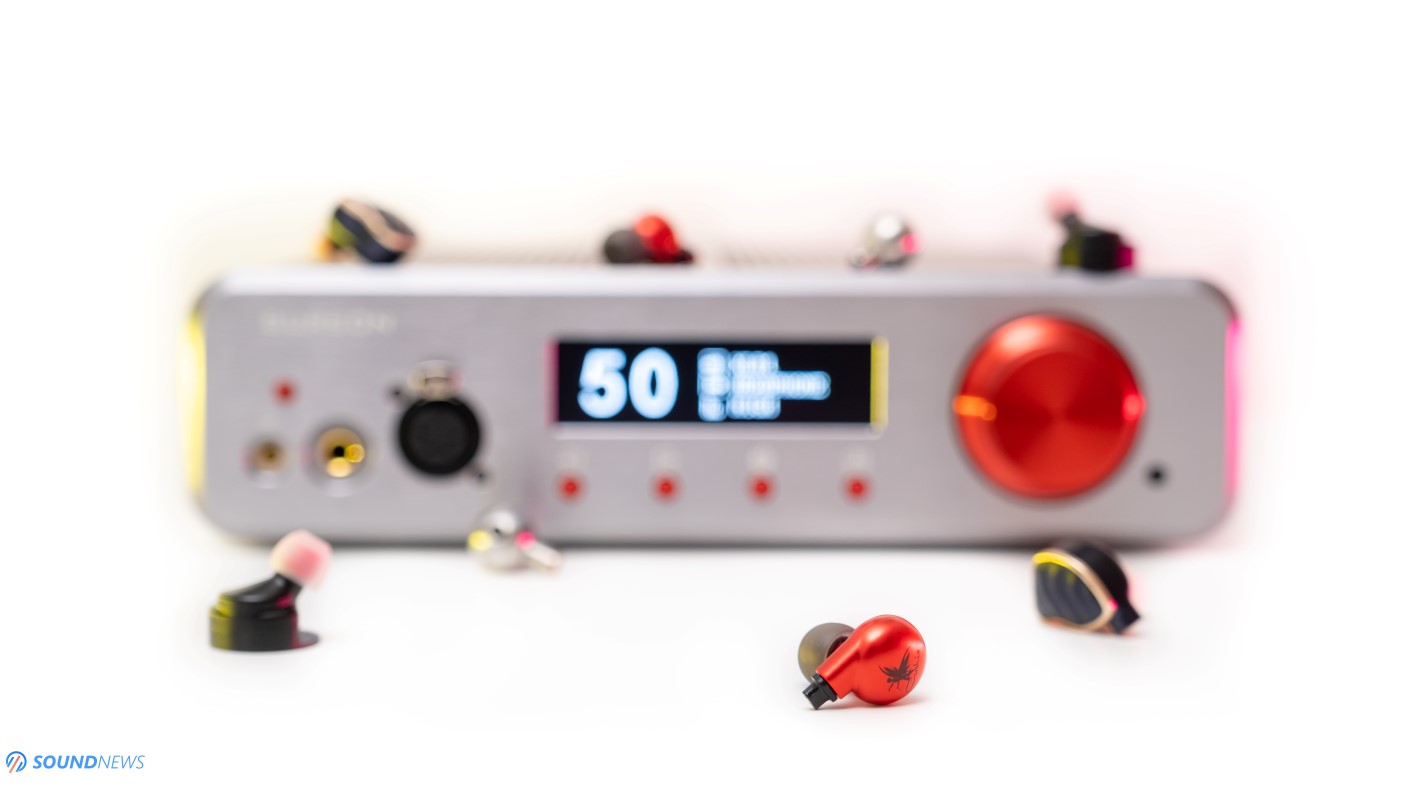
My Conclusion
It should be pretty clear by now how much joy Soloist GT brought to my listening battle station, I enjoyed every minute of it and several friends joined forces on week-ends for extended listening sessions and comparisons and if you’re coming for a listen, don’t forget grabbing a bottle or two.
In my case, Burson Soloist 3X already broke the boundaries of affordable Hi-Fi, improving every single aspect to their Conductor series, but Soloist GT pushed everything to the stratosphere, delivering a (much) cleaner presentation, a better imaging and depth, a (much) higher quality bass and treble, while further decompressing the music as if I’m listening to a TOTL tube-based amplifier. The family resemblance is too big to ignore, as Soloist GT sounds exactly as engaging and fun, but considerably more technical in every way. I’m glad that such all-discrete amplifiers exist today that will challenge the best measuring amplifiers out there. Soloist GT was literally the cleanest sounding all-discrete amplifier that I’ve tried, approaching so dangerously close to the Benchmark HPA4, that I see no reason to use it anymore. I believe its tonality it’s spot on; it doesn’t make my music overly smooth, nor does it try to mess with the treble output, it fully preserves the transient response and there’s an abundance of power even for the most demanding loads.
It wasn’t dead silent with ultra-sensitive IEMs and that Noctua cooler might put off several people. Otherwise, you are looking at an end-game solid-state amplifier that would drive your entire headphone collection.
All the quirks that I’ve experienced with Soloist 3X are no longer in place, its volume goes up and down as intended, it doesn’t pop and crackle when it’s powering On/Off and for all of the reasons combined, it’s my pleasure awarding it with our highest, Gold Award! Burson outdid themselves this time around, they deserve all our praise and I’m looking forward to what’s coming next from the Kangaroo land.

As a top-of-the-line headamp, you should get a nice present for your lady first, as Soloist GT will cost you a pretty penny. More exactly $2499 in its standard configuration and after adding a Super Charger 5A you’ll inflict a critical hit to your wallet for $2799. In either case you can get them directly from their web-store right here.
If you get the Grand Tourer, please come back and leave a comment below. I’m curious to know how it works with your entire headphone collection.
PROS:
- Rock solid build quality, unique casework that doubles as a giant heat-sink
- Provides all possible inputs and outputs, an advanced GUI and feature set came as a bonus
- Took the lead as the cleanest sounding all-discrete Class-A amplifier
- Sounds big, wide-open and imposing
- Focusing on notes playing in the background wasn’t a challenge anymore
- Covers the frequency response in full, but it will surely impress more with its playful bass and clean treble delivery
- Easily drove my entire headphone collection leaving a ton of headroom on tap
- Impressive dynamics, pace, rhythm and timing
- Excellent pre-amplifier section
- No distortion at higher volumes, provides an iron grip over headphone drivers
- Sounds effortless with any load and musical genre
- Delivers an honest presentation, as Burson team went with a reference tuning
- A highly technical, yet engaging sounding amplifier
- One of the best solid-state amplifiers money could buy
CONS:
- Super Charger 5A felt as a must-have upgrade
- Soloist GT wasn’t an IEM friendly amplifier, its noise floor could still be spotted on all gain levels
- Although a genius idea, its active cooling might put off potential buyers
- Still gets hot after about an hour of use, forget about putting anything on top
ASSOCIATED EQUIPMENT:
- DACs: Rockna Wavelight, Audiobyte HydraVox & HydraZap, Gold Note DS-10 Plus & PSU-10 Evo, SMSL VMV D2, SU-9N, Singxer SDA-6 PRO
- DAPs: FiiO M17, M11 Plus, Shanling M8, Hiby RS6
- Headphone Amps: Burson Soloist 3X Grand Tourer, Ferrum Audio OOR + Hypsos, Flux Lab Acoustics Volot, Benchmark HPA4, Musician Andromeda, Gustard H16 & others
- Preamps: Benchmark HPA4, Topping PRE90
- Power Amps: Benchmark AHB2 in bridged mode (x2), KECES S300
- Loudspeakers: KEF Reference 3, Natural Sound NS-17
- IEMs: FiiO FA9, FH9, FH7, 7Hz Timeless, Meze Rai Penta, Rai Solo, LittleDot Cu KIS, Hiby Crystal 6 & others
- Portable headphones: Meze 99 Classics, Sennheiser Momentum 2
- Full-sized headphones: Hifiman Susvara, HE1000SE, Arya Stealth, Audeze LCD-4, Erzetich Phobos V2021, Erzetich Mania, Kennerton Rognir, Magni, Gjallarhorn, Vali, M12S, Sendy Audio Peacock & AIVA, Apos Caspian & others
- Interconnects: QED Reference (x2), Topping TCX1 (x2)
- Speaker cables: Kimber PR8, Audioquest Type4
- Power Cables: Isotek EVO3 Premier (x3)
- Balanced Isolation Power Conditioners: PLiXiR Elite BAC1500, Elite BAC400
